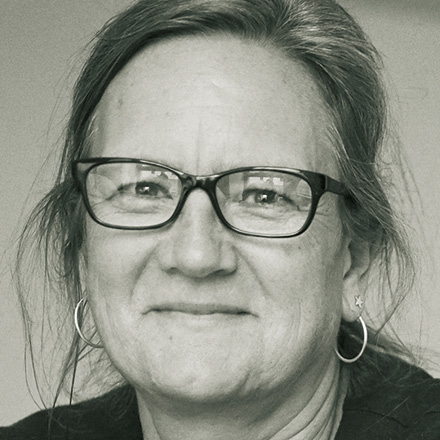Population growth
Putting Africa first
At first glance, Africa can expect robust growth in the decades ahead, particularly in its poorest regions. After the impact of Covid-19, average annual rates of Gross Domestic Product (GDP) growth from 2021 to 2040 are forecast at 4.8 % for Africa with its 23 low-income countries growing particularly rapidly (figure 1 - please click on arrowhead in picture above to see it).
Economic growth would thus be considerably faster than in other world regions. But rapid GDP growth does not necessarily translate into higher living standards. For one thing, Africa’s rapid population growth reduces the rate at which per-capita incomes improve, as the benefits are spread over more people. The age structure of the population matters as well: swelling ranks of those too young or too old to work are a drag on the economy. Sustainable improvement of living standards, moreover, depends on good policymaking regarding development-related issues such as technology, infrastructure and other things.
The plain truth is that income gap between Africa and the rest of the world is widening. While conditions are improving in Africa, they are doing so more slowly than elsewhere.
The forecast data on extreme poverty provide a telling example. Extreme poverty (living on the purchasing power of $ 1.90 or less per day) is expected to increase in Africa between now and 2040. The number of Africans in extreme poverty will increase from 510 million to 573 million in 2030 (figure 2 - please click on arrowhead in picture above to see it).
While extreme poverty is disappearing from most parts of the world, it is likely to remain in Africa in the decades to come. By 2030, the final year for the elimination of extreme poverty as included in the Sustainable Development Goals, extreme poverty is expected to affect around a third of Africa’s population. An implication is that, after 2030, discussions about extreme poverty will focus on sub-Saharan Africa and only very few other countries, such as Venezuela, North Korea and Afghanistan, for example.
One reason for the dim outlook for African incomes is that the continent’s GDP growth, while admirable, is too slow to accommodate the needs of a growing population. Africa’s population is currently expanding at 2.6 % per year; although, by 2040, that rate is expected to slow to 1.9 %. The growth in economic output is not sufficient to keep up with the growth in the number of people. To keep up with forecast population growth, the average rate of GDP growth would have to be at least double that of the currently forecast rate.
Aside from its effect on per-capita GDP, population growth is generally a good thing for an economy, depending on the age structure of the population. In particular, when the ranks of workers expand relative to the ranks of dependents, a country experiences an income-accelerating “demographic dividend”. The big challenge is to make this happen in Africa (see Hans Dembowski in Focus section of D+C/E+Z e-Paper 2020/04).
The continent’s age structure has not been favourable in the past. In 1987 the ratio of working-age people to dependents in Africa bottomed out to 1.0 (one working-age person per dependent) – the lowest ratio for any region worldwide – compared to 1.6 worldwide.
Since 1987 the worker-to-dependent ratio in Africa has improved, but not by much: It is still below 1.3. The tipping point at which demographic dividends appear is around 1.7. Africa is expected to reach this point only around 2050. After that, the ratio should steadily improve, reaching to 2.0 by 2070.
To judge merely by demographic trends, one might thus say that good economic times lie ahead – although some three decades into the future. However, demographic trends are only part of the picture when it comes to reducing poverty rates and boosting average incomes.
Africa’s optimistic demographic scenario for 2050 and beyond is undermined by global trends in technology. Technologies such as machine-to-machine communication, which replace labour and reduce the cost-advantage of workers in low-income countries, can make demographic structures less significant as boosters of national income.
Lessons from Asia
The economies of the “Asian Tiger” countries (Hong Kong, Singapore, South Korea and Taiwan) and China boomed between the early 1960s and the 1990s, providing potential lessons for Africa. At the time of their booming expansion, these countries had a ratio of 2.8 working-age people per dependent. In contrast, Africa will reach a much lower peak ratio of 2.0 in 2070. Africa’s demographic dividend will thus be smaller than those of the Asian Tigers and China.
There is a further difference between the Asian Tigers and Africa. In addition to enjoying more favourable population age structures, China and the Asian Tigers boosted productivity and incomes through a range of policies targeted at development. They had development-oriented governing elites that invested in agriculture and food security, ensured literacy and basic education, built export-oriented economies, and supported the productive elements of their economies, such as encouraging low-end manufacturing.
Too little of this has occurred in Africa. The continent needs transformations in agriculture, health, demographics, education, industrialisation, technology, trade policy, political stability, governance and external support. Adding to the challenges, Africa must adapt to the climate crisis (see my essay in Tribune section of D+C/E+Z e-Paper 2020/06). Taken together, policy changes in these areas would produce a powerful “Africa First” scenario, whose aim would be to reduce poverty and increase incomes over time. This scenario can provide a benchmark for evaluating measures to support Africa’s development.
Jakkie Cilliers is the founder and former director of the Institute for Security Studies, a non-profit organisation with offices in South Africa, Senegal, Ethiopia and Kenya. This essay is based on his book “Africa first! Unleashing a growth revolution”, recently published by Jonathan Ball (Cape Town and Johannesburg, 2020, available on Amazon).
jcilliers@issafrica.org




